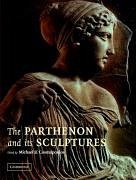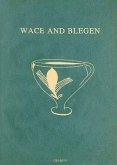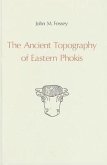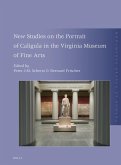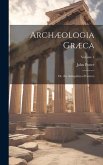Short description/annotation
This book offers new interpretations of some of the most crucial issues of the Parthenon.
Main description
Few monuments have fascinated people as much as the Parthenon. Two and a half millennia after its construction, this monument continues to generate important research across a wide range of fields, from classics and art history, to archaeology and the sciences. This book, which grows out of a conference held at the University of Missouri-St. Louis, presents the latest developments in Parthenon research by an international cast of scholars and scientists. It offers new interpretations of some of the most crucial issues of the Parthenon, ranging from the authorship of the frieze to the reconstruction of its missing sculpture, as well as the sociopolitical context in which the monument was created and the application of new technologies in Parthenon studies. Showcasing the most up to date research on the Parthenon, this book not only presents the current state of Parthenon studies but also marks the future direction of scholarship.
Table of contents:
Preface: the methodological framework of Parthenon studies Michael B. Cosmopoulos; 1. A new analysis of the Parthenon Frieze Sarantis Symeonoglou; 2. Classic moments: time in the Parthenon Frieze Jenifer Neils; 3. Work sections and repeating patterns in the Parthenon Frieze John G. Younger; 4. Pandora and the Panathenaic peplos Noel Robertson; 5. A reconstruction of the Parthenon's east pediment Georgios Mostratos; 6. The Parthenon East Metopes, the Gigantomachy, and digital technology Katherine A. Schwab; 7. The Parthenon in 1687: new sources William St Clair and Robert Picken; 8. Intra-quarry sourcing of the Parthenon marbles: applications of the pentelic marble stabe isotope database Scott Pike.
This book offers new interpretations of some of the most crucial issues of the Parthenon.
Main description
Few monuments have fascinated people as much as the Parthenon. Two and a half millennia after its construction, this monument continues to generate important research across a wide range of fields, from classics and art history, to archaeology and the sciences. This book, which grows out of a conference held at the University of Missouri-St. Louis, presents the latest developments in Parthenon research by an international cast of scholars and scientists. It offers new interpretations of some of the most crucial issues of the Parthenon, ranging from the authorship of the frieze to the reconstruction of its missing sculpture, as well as the sociopolitical context in which the monument was created and the application of new technologies in Parthenon studies. Showcasing the most up to date research on the Parthenon, this book not only presents the current state of Parthenon studies but also marks the future direction of scholarship.
Table of contents:
Preface: the methodological framework of Parthenon studies Michael B. Cosmopoulos; 1. A new analysis of the Parthenon Frieze Sarantis Symeonoglou; 2. Classic moments: time in the Parthenon Frieze Jenifer Neils; 3. Work sections and repeating patterns in the Parthenon Frieze John G. Younger; 4. Pandora and the Panathenaic peplos Noel Robertson; 5. A reconstruction of the Parthenon's east pediment Georgios Mostratos; 6. The Parthenon East Metopes, the Gigantomachy, and digital technology Katherine A. Schwab; 7. The Parthenon in 1687: new sources William St Clair and Robert Picken; 8. Intra-quarry sourcing of the Parthenon marbles: applications of the pentelic marble stabe isotope database Scott Pike.

